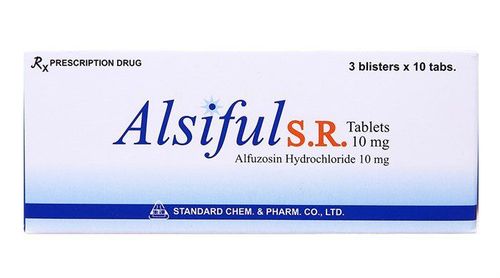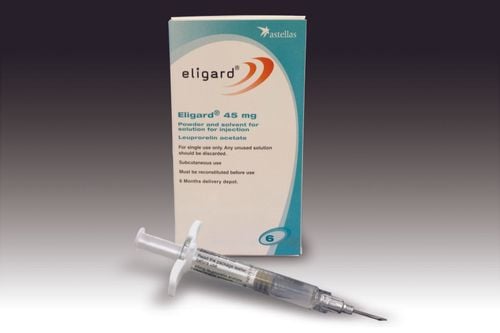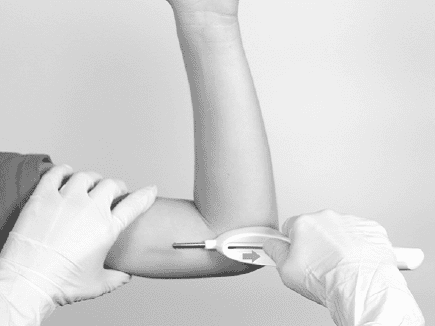This is an automatically translated article.
The article is professionally consulted by MSc Vo Thien Ngon - Urology Surgery Doctor, Vinmec International Hospital Da Nang.
Prostate disease is a fairly common health problem in men, especially as they age. Smoldering symptoms persist, but the patient silently suffers, greatly affecting the quality of life. Having the right understanding of this group of pathologies helps patients to orient their early examination according to their specialty, to relieve anxiety and depression.
1. What is prostate disease?
The prostate gland (also known as the prostate gland) is an organ of the male reproductive system. This organ is about the size of a walnut and is located at the base of the bladder. Going inside the gland is the urethral tube, which carries urine and semen out of the penis. In addition, the prostate gland is capable of producing and excreting the fluid that nourishes sperm, called semen. The prostate gland's ability to function is controlled by sex hormones. Accordingly, this organ will grow strongly from puberty until reaching an average weight of 20 grams by the age of thirty.About 25% of men 55 and older have prostate problems. This rate again increases to nearly 50% by the age of 70. In the early stages, the disease is mostly asymptomatic. However, as the disease progresses, the prostate gland gradually enlarges, causing pressure, the patient feels weak and difficult to urinate for a long time. Even if the prostate is too large, it can cause complete urinary retention.
2. Common prostate diseases
The three most common forms of prostate disease are prostatitis, prostate enlargement (benign prostatic hyperplasia), and prostate cancer. A male patient may have one or all of these three conditions at the same time. Details of each disease are presented below:
2.1. Prostatitis Although prostatitis can affect men of all ages, it is more common in relatively young men, between the ages of 30 and 50. The main causes of prostatitis are:
Bacterial prostatitis: Symptoms of acute or chronic infection, which respond well to common antibiotics; Non-bacterial prostatitis: Prostatitis manifests as inflammation, prolonged pain and swelling; of chronic pelvic pain syndrome of unknown etiology. Many theories include irritation from certain chemicals, problems with the nerves that supply the lower urinary tract, abnormalities in the pelvic floor muscles, sexual abuse, or chronic anxiety. The diagnosis and treatment of this group of diseases is relatively difficult. 2.2. Prostate Enlargement Prostate enlargement is a progressive process that causes benign prostatic hyperplasia, which is larger in size, but does not lead to cancer. This problem is extremely common as men begin to age. Although not life-threatening, an enlarged prostate can significantly affect a patient's quality of life.
When the prostate gland is enlarged, especially in the part surrounding the urethra, it will make the urethra narrow and put pressure on the bladder base. The result is a blockage in the flow of urine, making it difficult for the patient to urinate, straining to urinate and finally urinary retention. The patient is unable to urinate, causing the bladder to become enlarged and painful. The temporary solution is to have a catheter placed to release urine. However, this is sometimes very difficult to do and requires emergency cystostomy.
2.3. Prostate cancer Prostate cancer usually occurs in men over the age of 50 with a cause that is not clear. However, some evidence has suggested that the disease is related to age and family history.

In the early stages, cancer cells have just formed and are still limited to the prostate gland. Then, if not detected and treated specifically, the malignant cells will gradually become more active, the prostate gland enlarges very quickly. At this time, cancer cells have soon entered the vascular system, lymphatic system and spread to other parts of the body, causing secondary cancer. In which, the organ most often metastasized to prostate cancer is the bone.
3. Symptoms of prostate diseases
In the early stages of the disease, prostate problems can be completely asymptomatic. Then, the symptoms of prostate disease appear gradually depending on the growth rate of the prostate gland, including:
Difficulty urinating; Frequent urination, especially at night; Feeling that the bladder cannot be completely emptied; Painful urination; There is blood in the urine.
4. How to diagnose prostate disease?
In addition to the medical history of the above symptoms, prostate problems are also diagnosed by physical examination and further testing. The doctor will check for enlargement of the prostate gland with a gloved finger and rectal probing. In addition, by direct contact, the characteristics of surface, density, lumps if present on this organ are also easily recognized.
Besides, the results on imaging studies through ultrasound are also a reliable proof. This is the most common means, fast and easy to implement. What's more, in some cases where an infection is suspected, your doctor will order additional urine tests. If cancer is considered, early blood testing for prostate-specific antigen (PSA), computed tomography of the abdomen and pelvis, or even a prostate biopsy is the gold standard.
In short, prostatitis, prostate enlargement and prostate cancer are the three most common pathologies in this organ. If you or a loved one is a man and is between the ages of 50 and 60, has the above symptoms and a family history of prostate disease, see a urologist for a checkup, diagnosis and treatment. timely treatment.
When there are any abnormal signs in the prostate, the patient can go to Vinmec International General Hospital for examination and treatment. There is a team of well-trained, experienced urological specialists, a complete and modern medical equipment system, professional service quality, helping to improve the efficiency in diagnosis. and treatment of urinary diseases in general and prostate diseases in particular.
Please dial HOTLINE for more information or register for an appointment HERE. Download MyVinmec app to make appointments faster and to manage your bookings easily.
Reference source: webmd.com; medlineplus.gov













